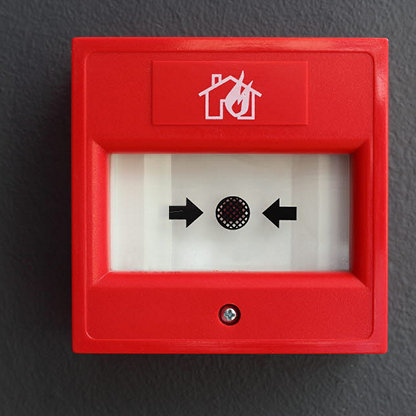RICS takes further steps to safeguard housing market stablilty, through consistency in valuation of properties with cladding
It has been five years since the Grenfell Tower fire. Following the horror of the fire itself and the dire impact on its victims, the repercussions of the tragedy have been deep and far reaching, with latest data suggesting nearly 10,000 properties still need remediation*.
Against this backdrop, RICS has played a key role, working tirelessly, often behind the scenes, to ensure a better, safer built environment.
The loss of confidence in the fire safety of blocks of flats has also severely impacted the property market and leaseholders, with many leaseholders still unable to sell due to the absence of mortgage finance, and, until recently, facing unaffordable costs for risk mitigation and remediation. For this reason, our work also remains focussed on safeguarding stability in the property market working in consultation with industry, professions and government.
The EWS1 form process was developed and adopted across the lending industry from late 2019. While EWS1 forms have, at times been a lightning conductor for the despair felt, understandably by many, the process has actually been pivotal in maintaining mortgage lending and transactions in the UK flat market for the last 2 years. EWS1, along with RICS’s 2021 guidance on its proportionate application, helped to ensure that the market for residential flats continued to operate proportionately, at a time of acute stress arising from a loss of confidence in building safety.
With the difficult steps now being taken to ensure funding and deliver protections for leaseholders from uncapped remediation costs in blocks of flats over 11 meters, I am pleased to note signs of confidence coming back into the mortgage market. This is reflected in the recent joint statement from UK Finance and the Building Societies’ Association regarding lending on properties in buildings over 11m, where remediation is planned (but not complete). The progress is still tentative, so while recognising the remaining uncertainty many leaseholders are facing, things are heading in the right direction.
To help expedite progress, and to underpin confidence for the public’s benefit, I am pleased to announce that RICS has begun the initial process of consulting with valuers, lenders, Government, fire engineers, conveyancers and other key stakeholders to develop guidance to support valuers and their lender clients with a framework for valuing properties with cladding in line with established standards. A public consultation will follow.
This is different to the Guidance Note published in March last year, which supports valuers and their lender clients to take a proportionate and consistent approach to instructing EWS1 assessments. That guidance remains effective and supported by all industry stakeholders that depend on the process. One of the largest firms of residential valuers reports that the proportion their total valuation instructions of flats where a new EWS1 needs to be undertaken now stands at 5%.
With the implementation of the Fire Safety Act and the statutory protections for leaseholders against costs in the Building Safety Act, I anticipate reliance on EWS1 will inevitably fall away completely, with external wall fire risk assessments falling in line of the normal FRA process according to BSI PAS9980 – a standard that RICS helped to create.
These steps are game changers, and lenders will no doubt be working closely with their own credit risk committees and with financial regulators to define changes to their individual policies on lending. It is to be expected that the Secretary of State will maintain pressure on them to kick start lending, in light of the protections now in place.
The property value, is a key determinant of lending decisions, and this is where RICS and its professional members come in. My colleagues and I hope that the new planned guidance will support transparency and consistency of approach to the valuation itself, where a lender instructs the valuer to proceed where the building’s external walls are still awaiting remediation. Inevitably there will be increased uncertainty over the accurate value in situations where the timing of works or the method of funding is unclear or disputed, especially at the early stages, where a strong body of market evidence has not yet built up. This is why RICS guidance on approach to expressing uncertainty and use of appropriate, agreed assumptions is important.
In coming months, following our consultations with valuers, lenders, Government, fire engineers, conveyancers and other key stakeholders to develop this guidance, a public consultation will be held so that, as with any RICS guidance, the approach will be open and transparent. I especially encourage pro-active engagement from professionals, industry, government, leaseholder and homebuyer groups and the public to ensure all views are considered. Once the consultation is complete, the guidance will be reviewed by our independent Standards & Regulation board to ensure that the guidance is proportionate, and in the best interests of the public.
Resolution of the exceptionally challenging problems in this area will require continued bold steps by leaders across industry and public life. I hope that soon we will be able to look back and see this as the start of the end of this terrible episode, that has touched on so many.
Notes for editors:
*Almost 10,000 buildings 'unsafe' with danger cladding five years on from Grenfell - LBC
About the author

Luay Al-Khatib
Director of Standards and Professional Development, RICS
Luay is RICS Director of Standards and Professional Development, with lead responsibility for RICS’s professional standards framework and associated regulatory policy. The department’s remit is to ensure that RICS’s professional framework is developed and maintained in the public interest, supports excellence in ... the profession and is effectively integrated with external regulatory structures. He took up this role in March 2020, and is supported by a senior team of standards and policy specialists. Prior to his current role, Luay was RICS Director of Regulation - EMEA, for five years. As Director, he had overall lead accountability for regulatory policy and regulation operations for RICS in the UK, Mainland Europe, Middle East and Africa. Prior to that, Luay held a number of other key roles, leading the profession’s valuation standards development, globally, in external affairs and as an RICS, UK Regional Director. Read More
















